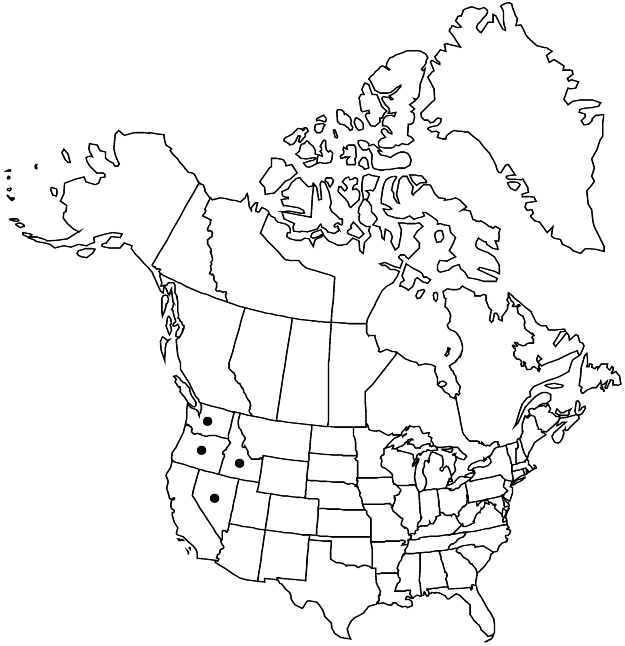Eremogone franklinii
Sida 21: 240. 2004.
Plants ± cespitose, bluish green, not glaucous, with woody base. Stems erect, 3–10(–15) cm, glabrous. Leaves: basal leaves persistent; cauline leaves in 6–10 pairs, closely overlapping, not reduced; basal blades arcuate-spreading, needlelike, (0.6–)1–2 cm × ca. 1 mm, ± rigid, herbaceous, apex spinose, glabrous, not glaucous. Inflorescences 3–45+-flowered, usually congested, subcapitate cymes. Pedicels ca. 0.1–3(–4) mm, glabrous. Flowers: sepals 1–3-veined, linear-lanceolate, (5–)8.5–12 mm, not enlarging in fruit, margins narrow, apex acuminate, glabrous; petals white, oblong-lanceolate to narrowly spatulate, 7–9 mm, 0.8–1.1 times as long as sepals, apex rounded to blunt; nectaries not apparent. Capsules 2.3–3.3 mm, glabrous. Seeds black, pyriform, 1.2–1.7 mm, tuberculate.
Distribution

Idaho, Nev., Oreg., Wash.
Discussion
Varieties 2 (2 in the flora).
Selected References
None.
Key
| 1 | Inflorescences tightly congested cymes; pedicels 0.1-1(-3) mm; sepals 8.5-12 mm; petals 0.8-0.9 times as long as sepals | Eremogone franklinii var. franklinii |
| 1 | Inflorescences somewhat congested cymes; pedicels 1-4 mm; sepals 5-8 mm; petals 1-1.1 times as long as sepals | Eremogone franklinii var. thompsonii |